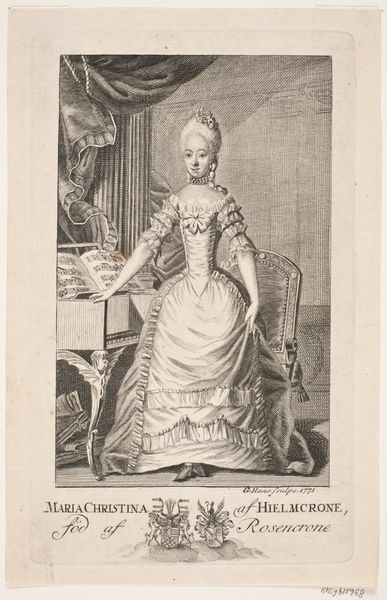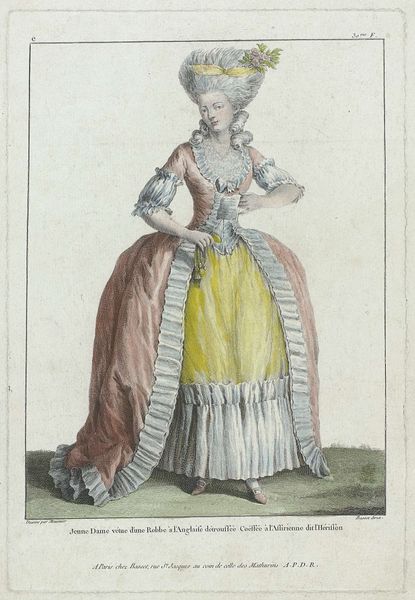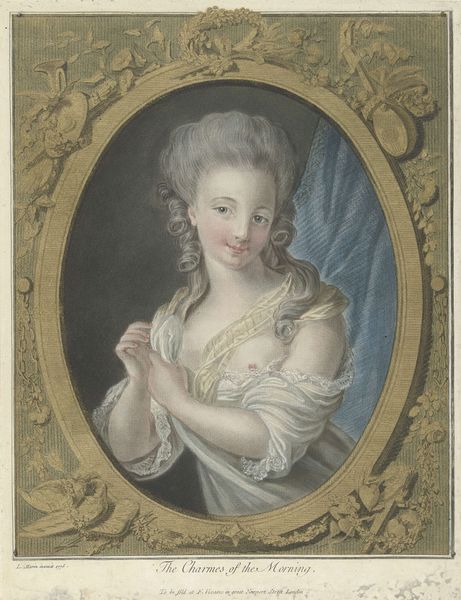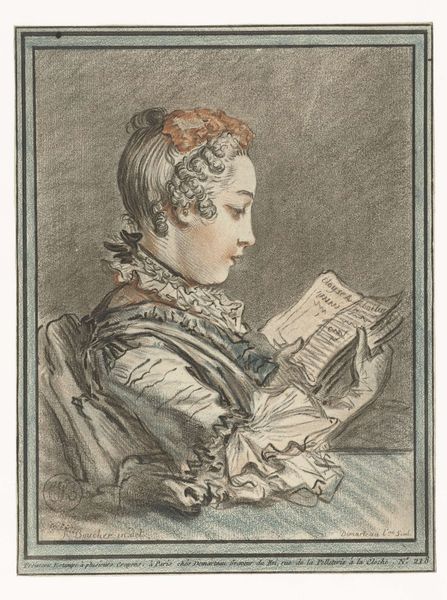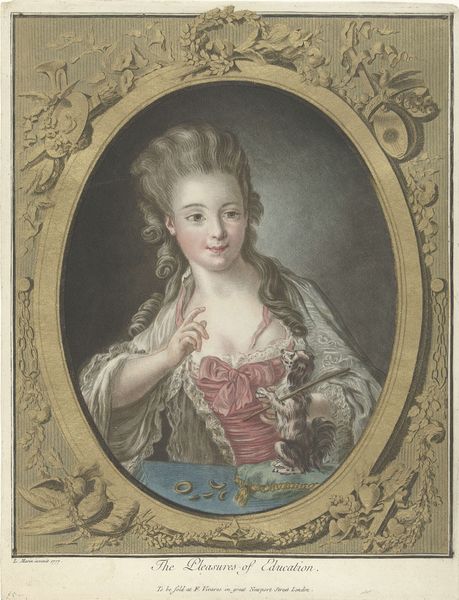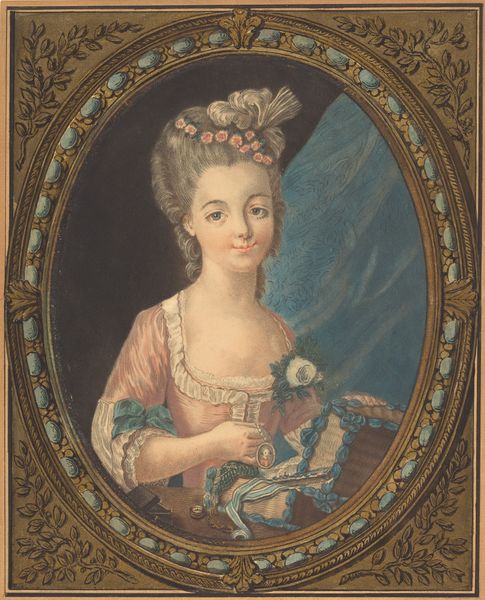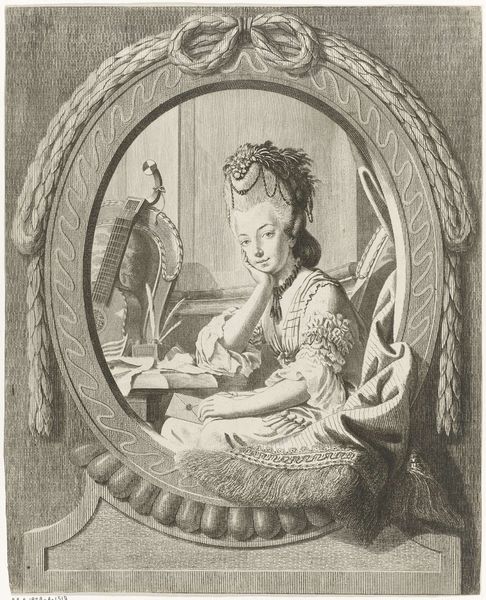
Louise, wife of Prince Karl of Hesse-Kassel, wearing Turkish Costume 1772
0:00
0:00
Dimensions: 134 mm (height) x 94 mm (width) (bladmaal)
Editor: Here we have Cornelius Høyer’s 1772 watercolor and graphite drawing, "Louise, wife of Prince Karl of Hesse-Kassel, wearing Turkish Costume." It's quite petite. What strikes me most is the… theatricality of it all. The costume, the pose, even the backdrop – it feels like a stage. What’s your take on it? Curator: Oh, "theatrical" is spot-on! I see a confection of cultural appropriation and aristocratic boredom. This "Turkish Costume" is less about understanding another culture, and more a whimsical fancy dress, isn't it? And the little mirror – what do you suppose she sees in it? Just her image, or a reflection of her status, perhaps? Editor: Status, definitely! The pearls, the elaborate hairstyle, the fur trim… all scream wealth and privilege. But do you think there's any genuine curiosity behind the costume, or is it purely performative? Curator: Curiosity… a tantalizing question. Perhaps a glimmer. The Rococo period adored the exotic, but usually filtered it through a European lens. Consider the broader context. This was an age of enlightenment and burgeoning travel, alongside colonial exploits. Louise here is both participant and product of her time. Does her gaze hint at anything other than social posturing, I wonder? What do you make of it? Editor: I think it's hard to tell. There's a flatness to her expression that keeps it enigmatic. Like she's playing a part, but we don't know the script. Curator: Precisely! And perhaps the script was "be beautiful, be wealthy, be seen." A role, rather than a life. Perhaps, we are all costumes of our time, in the dramas we enact! It gives you pause, doesn’t it? Editor: It certainly does! I thought it was a straightforward portrait, but now I see it as a complex commentary on identity, privilege, and representation. Curator: Wonderful! To look at a thing, and see through it. That is why we come to look at art!
Comments
No comments
Be the first to comment and join the conversation on the ultimate creative platform.
